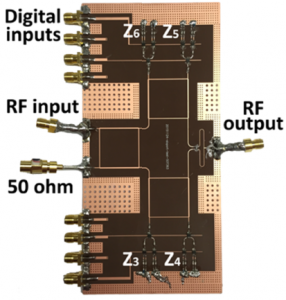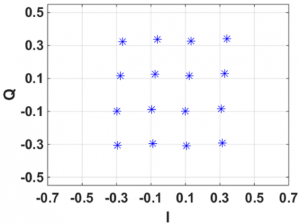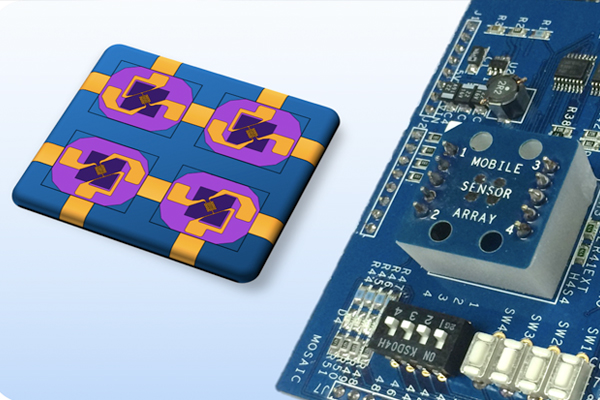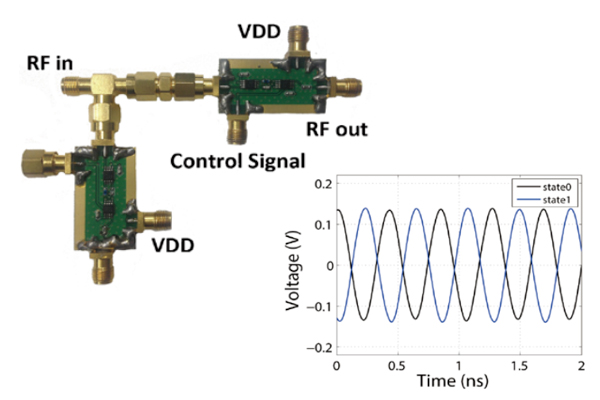Recently, due to a rise in demand for high data rate in mobile networks, there has been much effort to increase the number of antennas in cellular communication systems. The conventional Multiple Input Multiple Output (MIMO) radio frequency (RF) transmission system consists of digital-to-analog converts (DACs), mixers, oscillators, and antennas, and the number of the RF systems increases proportionally as the number of antennas increases. In particular, massive MIMO systems, where more than 100 antennas are suggested, require equal number of RF systems, which may consume significant power with complexity issues.
In order to solve these issues, Professor Ju Yong Lee at Korea Advanced Institute of Science and Technology has proposed various approaches to implement a new RF concept. One approach is using two sub-blocks of the proposed RF system, a beamforming module that has four steerable beams and an impedance loading board that supports 16-QAM modulation level.
Antenna design for beamforming

The structure of the antenna is shown in Fig. 1 and a physical model is shown in Fig. 2. The antenna is composed of twelve antenna elements that are based on the L-shaped slot antenna structure. In the antenna, the red numbered ports 1 to 4 are active antennas. The blue numbered ports 1 to 8 are parasitic elements that can change beam directions. By controlling the impedance values of the parasitic elements, the antenna can alter beamforming radiation patterns. The antenna is made of Taconic RF-60a substrate with a thickness of 0.79mm(εr=6.15). The size of the antenna is 120mm x 120mm and its resonance frequency is 1.84GHz. Antennas are fed by coaxial cables connected to the bottom ground of the antenna.
The antenna is modeled using the commercial EM full-wave simulator: CST 2011 software. The simulated radiation patterns in azimuth plane of the antenna are presented below (Fig. 3). Each antenna radiates toward different directions with low correlation among antennas. The antenna gain is 2dBi in the main-lobe direction. For all radiation patterns, the estimated correlation coefficients of the proposed antennas are less than 5%.


Impedance loading board design for RF modulation
The proposed 16-QAM modulation level impedance loading board design consists of a six-port correlator and a switching network (Fig. 4). The six-port correlator minimizes the system input return loss even if the impedance value changes to output desired I/Q signals. This effectively mitigates interference errors among RF streams. Professor Lee proposes using CMOS switching chips to implement the switching network. Unlike previously reported work, this design uses the full range of reflection coefficients, which improves system power loss. The proposed RF system has high power efficiency since it consists of passive lossless components and switching chips.

Each I and Q switching network chooses the impedance value among four values: short, 25 ohm, 100 ohm, and open. Therefore, the proposed design supports 16-QAM modulation in time domain constellation. Fig. 5 is the fabricated impedance loading board and measured 16-QAM constellation. The measurement results show that the board supports 16-QAM modulation well with small EVM (Fig. 6).


In summary, the proposed RF concept is a promising technique due to the following reasons: (1) it supports multi-stream steerable beamforming that greatly improves the overall system throughput, and (2) the proposed system is simpler than the conventional MIMO, especially when many antennas are used.









